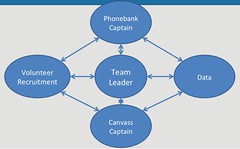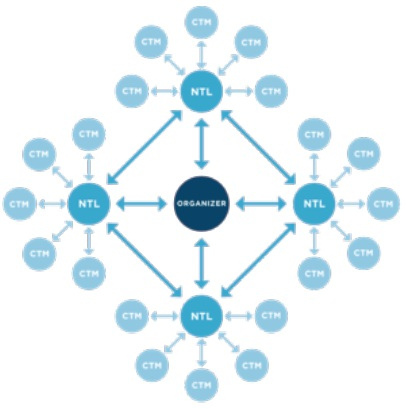The Snowflake Model
Michael Gottwald, Carl Kriss & Josh Penn
In the 2008 and 2012 elections, the “Snowflake Model" was used by the Obama campaign to empower millions of volunteers across the country. In this post we will introduce its basic idea for further contemplation about its relevancy for grassroots film distribution. Before the Obama campaign, many organizations had attempted to create vast volunteer networks through grassroots organizing but fallen short. In the Huffington Post article, "The New Organizers, What’s really behind Obama’s ground game,” writer Zack Exley explains that, “Other recent attempts have failed because they were either so "top-down" and/or poorly-managed that they choked volunteer leadership and enthusiasm; or because they were so dogmatically fixated on pure peer-to-peer or 'bottom-up"'organizing that they rejected basic management, accountability and planning.”
In contrast to other grassroots campaigns, the Obama "Snowflake Model" offered an unprecedented amount of responsibility and ownership to volunteers, which in turn motivated supporters to reach their furthest level of involvement on the campaign.
Below is a flowchart that illustrates the Obama neighborhood team model, which is built out of the Snowflake Model.

"The Legacy Project," which was conducted by the Obama campaign in order to analyze its best practices from the 2012 election, defines the volunteer roles that consist in each snowflake.
“Relationships among team members held the snowflake together and ensured the team was communicating frequently and working toward common goals…In the center of the team snowflake was the Field Organizer, who managed multiple Neighborhood Team Leaders. In addition to the NTL, each team ideally consisted of at least three Core Team Members, or CTMs: a Phonebank Captain, a Canvass Captain, and a Data Captain. Many teams had at least one other state or turf-specific CTM, such as Voter Registration Captain, Digital Captain, Youth Captain or Faith Captain.”
Leadership titles like Neighborhood Team Leader, Canvass Captain and Phonebank Captain etc, helped delegate responsibility among volunteers. The "Snowflake Model" also encouraged supporters to become invested by offering more responsibility and access to volunteers who demonstrated they were committed. For example, someone could start off just as a voter, sign up online, volunteer, become a Neighborhood Team Leader and then work as a staff member on the campaign. This created a sense of ownership and trust that cultivated thousands of neighborhood teams across the country that canvassed undecided voters, registered voters and ran its massive voter turnout operation on Election Day.
This causes us to wonder if the "Snowflake Model" can also be used to channel the enthusiasm of movie fans towards distributing film. What is the equivalent of a voter in the film world? The equivalent of a volunteer? Neighborhood Team Leader? Do these positions exist in the film distribution already, in different forms? If not, could they be created?
Throughout the year we will explore ways the Obama Snowflake Model can be applied to film as well.
-Josh, Michael, and Carl

